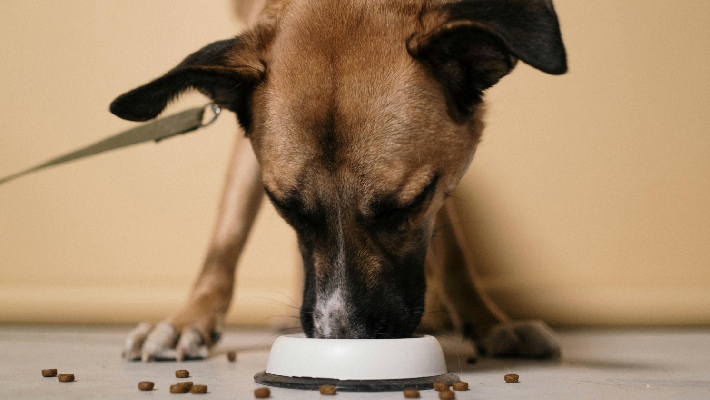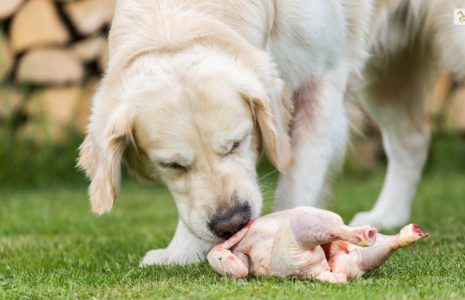How Much Food Should I Feed My Dog? Finding The Perfect Portion For Your Pup


“How much food should I feed my dog?” is quite a common concern for dog owners, especially those who are first-time pet parents. However, figuring out the right answer to this question is quite difficult. This is mostly because, no matter how many times a day you feed your dog, it will never be enough for them.
Your furbabies will come running whenever they hear the sound of the fridge door opening. They will also give you sad puppy eyes when they find you grabbing a quick bite, regardless of the fact that you just fed them. Moreover, with so much conflicting information out there, it can be overwhelming and confusing to determine the right amount of food to feed your dog.
But dont worry. We are here for you. In this article, we will help you find out the answer to your question, “how much food should I feed my dog?” We will explore the factors that affect how much food your dog needs and how often they should eat. We will also provide a dog feeding chart as a helpful reference for every pet owner. So, let’s dive in.
How Much Food Should You Feed To Your Dog? Factors to Consider

Figuring out the right amount of food to feed your dog is crucial for their overall health and well-being. Overfeeding your furbaby might seem like love, but it can lead to weight gain and obesity. On the other hand, underfeeding will deprive your dog of essential nutrients and cause a variety of health issues.
So, how much is just right for your dog? There are several factors that you need to consider to determine the right amount of food for your dog. These are as follows:
Age
The nutritional needs of dogs vary depending on their age. Puppies, for example, require more food due to their rapid growth and high energy levels. As they grow and become adults, their nutritional requirements change, and they will need to be fed less. Senior dogs, on the other hand, may require a specialized diet that is lower in calories and higher in nutrients to support their aging bodies.
Size and Breed
The size and breed of your dog play a significant role in determining their nutritional needs. Smaller breeds, such as Chihuahuas, have faster metabolisms and need to be fed more frequently than larger breeds, like Great Danes, who have lower energy needs. Additionally, certain breeds, such as working or active breeds, may require more food to fuel their active lifestyles.
Activity level
Just like humans, the activity level of your dog will affect their caloric needs. Dogs that are highly active, such as those who participate in sports or those who accompany their owners on runs, will require more food to maintain their energy levels. In contrast, dogs with a sedentary lifestyle will need less food to avoid weight gain.
Health Conditions
Some health conditions, such as diabetes or thyroid problems, can affect the metabolism and caloric needs of your dog. If your dog has any health issues, it is crucial to consult with your veterinarian to determine the appropriate amount and type of food to feed them.
Reproductive status
Intact female dogs, such as those who have not been spayed, have different nutritional needs compared to neutered or spayed dogs. Intact females may require more food during pregnancy and nursing, while spayed or neutered dogs may have a lower caloric requirement due to their decreased metabolism.
Type and Brand of Food
Different dog foods have varying caloric densities. Denser, higher-calorie foods may require smaller portions than lower-calorie options. Always refer to the feeding guidelines on your dog food bag, but remember these are just a starting point – you may need to adjust further based on your dog’s individual needs.
Dog Feeding Chart

To help you determine the right amount of food to feed your dog, here is a general dog feeding chart based on their weight and activity level:
| Dog Weight | Amount of Food |
| 5 lbs | 1/2 cup (115 grams) |
| 10 lbs | 3/4 cup (170 grams) |
| 20 lbs | 1 1/2 cups (230 grams) |
| 30 lbs | 2 cups (290 grams) |
| 40 lbs | 2 1/2 cups (360 grams) |
| 50 lbs | 3 cups (430 grams) |
| 60 lbs | 3 1/2 cups (500 grams) |
| 70 lbs | 4 cups (570 grams) |
| 80 lbs | 4 1/2 cups (640 grams) |
| 90 lbs | 5 cups (710 grams) |
| 100 lbs | 5 1/2 cups (780 grams) |
You can also check out the following feeding chart for dogs based on age:
| Age | Amount of Food (per day) |
| Puppies (8-12 weeks) | 4 meals, 1/2 – 1 cup of puppy food divided equally |
| Puppies (3-6 months) | 3 meals, 1/2 – 1 1/2 cups of puppy food divided equally |
| Puppies (6-12 months) | 2 meals, 1 – 2 cups of puppy food divided equally |
| Adult Dogs (1-6 years) | 1-2 meals, 1 – 2 cups of adult dog food divided equally |
| Senior Dogs (7+ years) | 1-2 meals, 1/2 – 1 1/2 cups of senior dog food divided equally |
However, you should note that this feeding chart is a general guideline and may need to be adjusted based on your dog’s individual needs. It is always best to consult with your veterinarian for the appropriate amount of food for your dog before incorporating it into your daily routine for dog.
Feeding Guidelines for Dogs

Now that you have the answer to your question, “How much food should I feed my dog,” you also need to know how often dogs should eat. The frequency of feeding your dog also depends on various factors, such as their age, size, and health conditions.
Here are some feeding guidelines for dogs to help you keep your furry friend healthy and well-nourished:
Read the packaging
You should start by checking the feeding guidelines provided on the dog food packaging. These guidelines are usually based on your dog’s weight and life stage. However, you should remember that these guidelines are estimates and may not perfectly match your dog’s needs. Use them as a starting point and monitor your dog’s weight and body condition.
Consider your dog’s life stage:
Take into account your dog’s life stage:
Puppies
Puppies require more frequent meals compared to adult dogs due to their high energy needs and smaller stomachs. As a general rule, puppies should be fed three to four times a day until they reach six months of age. After six months, they can be switched to a twice-daily feeding schedule.
Adult Dogs
Adult dogs can be fed twice a day, with a 12-hour interval between meals. This schedule works well for most adult dogs, but it is essential to adjust the amount of food you are giving based on their individual needs and activity levels.
Senior dogs
Senior dogs may have a slower metabolism and may benefit from smaller, more frequent meals. It is recommended that they be fed three times a day, with a 6-8 hour interval between meals.
Pregnant or nursing dogs
During pregnancy and nursing, dogs have increased nutritional requirements, and it is essential to feed them more frequently, typically four to five small meals a day. Pregnant and nursing dogs may also require a specialized diet specifically designed for their needs, so it is best to consult with your veterinarian for the appropriate food and feeding schedule.
Dogs With Health Conditions
Dogs with certain health conditions may require a specific feeding schedule or a specialized diet. For instance, diabetic dogs may need to be fed small, frequent meals to help regulate their blood sugar levels. It is essential to work closely with your veterinarian to determine the best feeding schedule for your dog’s health condition.
Divide Meals
Most adult dogs do well with two meals a day, while puppies may need three or more. Spreading out meals helps with digestion and prevents them from feeling too hungry.
Measure Portions
Use measuring cups to ensure consistent portion sizes. Avoid “eyeballing” it, as this can lead to overfeeding.
Treats Count
Remember that treats contribute to your dog’s daily calorie intake. Factor in treats and table scraps when determining portion sizes for their meals.
Final Thoughts
Thus, determining the right amount of food to feed your dog is crucial for their health and well-being. It is essential to consider factors such as age, size, activity level, and health conditions when deciding on their feeding schedule and portion sizes. Now that you have the answer to ‘how much food should I feed my dog?’, you also need to ensure that your furry friend is getting the right amount of nutrients to keep them healthy and happy.
Refer to the dog feeding chart as a helpful guide, and consult with your veterinarian for any specific dietary needs for your dog. With proper nutrition and a fixed feeding schedule, your dog will be able to live a long and healthy life by your side.








Leave A Comment